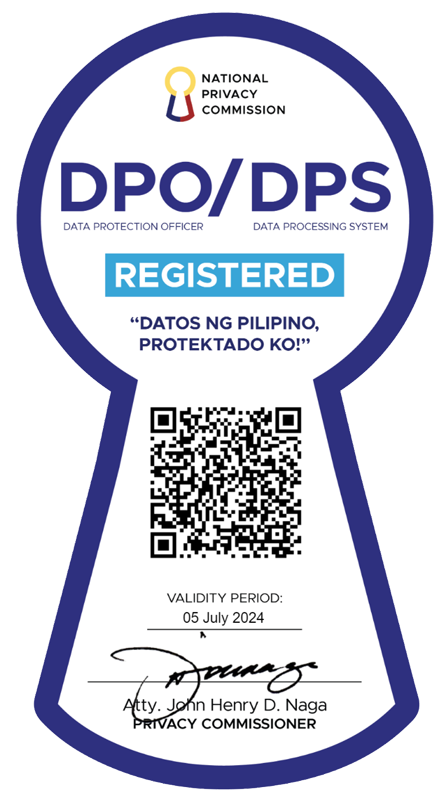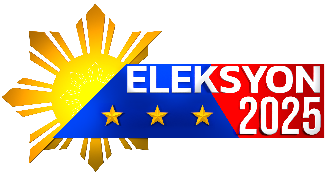PAGASA modernization to continue beyond PNoy
Sometimes, the end is the beginning. At least it is for the Philippines' state weather bureau.
Over the past six years of President Benigno Aquino III’s administration, the country weathered some of the worst natural disasters in history.
The combined deaths from Yolanda and Pablo alone amounted to over 7,000 people.
The Philippine Atmospheric, Geophysical and Astronomical Services Administration (PAGASA) was thus pressured the agency to ramp up its forecasting and warning capabilities.
PAGASA Weather Division Chief Dr. Esperanza Cayanan believes that the past six years have been a time of monumental growth for the bureau. She believes that the history-making disasters of recent years have put the spotlight on the bureau, enabling it to get the attention it deserved in terms of government support.
The Aquino administration, Cayanan shared, had been very supportive of PAGASA's push to procure new technologies and equipment.
In November 2015, Aquino signed Republic Act 10692 or the PAGASA Modernization Act.
Under the law, the government will provide for PAGASA’s upgrading and acquisition of equipment, training and other plans.
“Actually, ‘yung time ni President, ito ‘yung dumating na ‘yung makabagong technology natin. He’s very supportive naman sa procurement ng modern equipment natin,” Cayanan said.
“‘Yung time niya may bagyo na malalakas. Every time na may bagyo malakas, tinatanong niya kami kung ano pa ang mga kailangan naming para maimprove pa ang aming services,” she added.
As of now, PAGASA has 59 synoptic stations and 25 agro-meteorological stations deployed across the country. These stations gather meteorological information for use by the bureau’s central office.
PAGASA also has a total of seven upper-air stations, which profile wind pattern changes.
The bureau also has has over 78 climate and rain stations deployed at strategic sites.
According to Cayanan, these improvements helped pave the way for the state bureau to meet and even exceed international standards for tropical cyclone forecasting.
For example, PAGASA follows the World Meteorological Organization’s error threshold: a forecast track error of no more than 120 km. Cayanan disclosed that they were challenged by Aquino, through Department of Science and Technology Secretary Mario Montejo, to narrow this margin of error beyond international standards.
“Noong nachallenge kami, talagang pinag-igihan ng mga forecasters. May ginawa kaming bagong grupo, the tropical cyclone group. May mga techniques kami na ginawa, at ‘yung group ay nakafocus na sa tropical cyclones,” she said.
Cayanan asserts that the agency managed to achieve an error margin of 100 km.
However, Cayanan said the real legacy in terms of forecasting during the Aquino administration is the creation of the Heavy Rainfall Warning System (HR-WS).
Prior to the HR-WS, the bureau only looked at tropical cyclones' wind strength and forecast track, and not so much into rainfall amounts. But in 2012, she recalled that they were urged by the government to create a color-coded warning system solely for rainfall.
The HR-WS is one type of Rainfall Warning System (RWS) being used by the bureau to alert communities and emergency managers. The HR-WS is for rainfall events of long duration and widespread rain caused by tropical cyclones, monsoons and other weather events.
This was first used in Metro Manila but is now being implemented the country, Cayanan said.
The apportioning of the HR-WS is part of the regionalization efforts of the bureau.
During the Aquino administration, PAGASA centers across four other areas in the countries were built to better cater to the needs of locals, Cayanan claimed.
The bureau strategically established PAGASA centers in Tuguegarao in Northern Luzon, Albay in Southern Luzon, Cebu in Visayas, and Misamis Oriental in Mindanao.
“Dati-rati lahat forecasting sa Metro Manila nanggagaling, pero ngayon hindi na. ‘Yung limang regional centers, they come up with their own regional forecasts. Mas localized ngayon ‘yung forecast na binibigay. Bawat regional center equipped with tools,” she said.
The strengthening of the regional efforts to provide weather information came with the establishment of PAGASA Unified Meteorological Information System (PUMIS).
Cayanan explained that there is already a need to digitize information the bureau has collated through the years and store it in a database that would be accessible to all stations.
The PUMIS team is currently going around the PAGASA stations to train the staff on how to use the system. They expect to fully implement the system this year.
Along with this, Cayanan said they are already in the talks to create a mirror system in Cebu. This would serve as a backup site where they can send information and data to international centers should anything happen to the central office in the metro.
“We are coming into placing a mirror system in Cebu, kung ano ang nagagawa dito, magagawa sa Cebu,” she said.
Part and parcel of the modernization program of the bureau is its launching of an improved smartphone app and simplified informational materials, which PAGASA launched during Flood and Typhoon awareness week this June.
The bureau also published "Patnubay sa Weder Forkasting", a Filipino-language dictionary of technical weather terms aimed to address disconnect between the traditional English-language teaching of weather concepts in schools and the culture and language of the Philippines' various regions.
With all these accomplishments, Cayanan hopes that the incoming administration of President-elect Rodrigo Duterte would put as much support for the programs of the bureau.
“Yung suporta na hinihingi namin, bigyan pa rin kami ng pondo para sa maintenance at kung may mga makabagong technology pa na daraing. Kailangan rin naming i-capacitate pa ang aming mga personnel with continuous trainings,” Cayanan hoped. — TJD, GMA News





